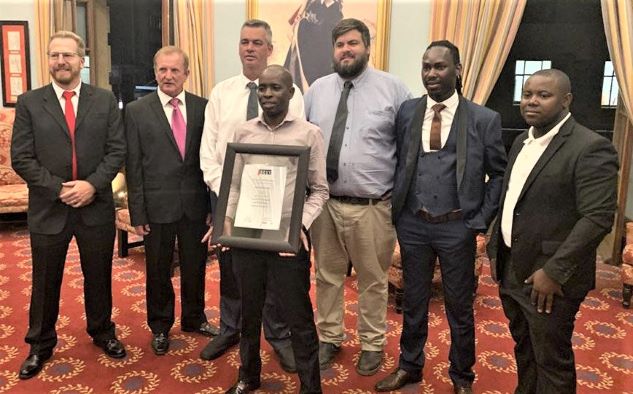
Corestruc was one of the
joint winners in the Specialist Contractor and Suppliers category of
Construction World’s Best Projects of the Year Awards 2019.
The company received the
award for its participation in the construction of a new 10Ml reservoir in
Bundu on behalf of the Thembisile Hani Local Municipality.
Thembisile Hani Local
Municipality is the first municipality in South Africa to use the company’s new
precast concrete system, which accelerates construction of reservoirs.
“This achievement would not
have been possible without the immense support from Thembisile Hani Local
Municipality. This is in addition to its highly competent professional team, comprising
consulting engineers, Ceenex Consulting Engineers and Mondeo Consulting, and
main contractor, Mbako Projects & Trading,” Willie de Jager, MD of
Corestruc, says.
A 10Ml reservoir can be
completed in only six weeks versus the four to six months to only construct
reservoir walls using conventional in-situ techniques, and this is without the
risk of having to redo the work, considering the technically complex nature of
these construction projects.
Reservoirs are complicated
and time-consuming structures to build. Wall construction demands absolute
precision to ensure water-tightness. This is followed by construction of the
roof, which entails erecting and installing tons of scaffolding and formwork
inside the structure. On most of these projects, work can, therefore, only take
place at one or two faces at any time.
Alternatively, Corestruc’s
system enables the construction of the floor, walls and roof simultaneously to
significantly accelerate the process.
The company builds the roof
and wall at its factories while the principle contractor completes the
earthworks and the reservoir floor. This means that the critical path of the
programme runs through the earthworks and foundations.
Perfecting the design of the
system took over five years from conception. It is based on best international
practice adapted for the unique African conditions.
Corestruc uses both vertical
and horizontal tensioning to resist applied forces. This is opposed to
conventional construction methods where reinforcing and post-tensioning is used
to control applied forces.
About 6,6 km of
post-tensioning ducts and cables were installed by hand between the joints of
the wall panels in preparation for the grouting on this project. This is in
addition to the numerous three-dimensional printed components that were used to
secure the rubber cast that acts as the temporary shutter.
The grout, designed to reach
a compressive strength of 100 MPa within four days, will react when the medium
comes into contact with water when filling the reservoir.
It also must extremely
flowable so that it can be pumped through all the post-tensioning ducts from a
single position using two static pumps. The pumps deployed at Bundu could be
quickly slowed down and accelerated to ensure that the correct quantity of
grout was applied between the various panels. The working time of the grout was
extended by cooling it to 7°C and took up to 40 hours in a continuous process
to pump it around the entire circumference of the two reservoirs.
The company then completed
the construction of the outer section of the roof and ended with the stitching
of the hollow-core slabs with a 35 MPa concrete to form a durable monolithic
slab structure.
Corestruc is now preparing to
manufacture another two 10 Ml precast-concrete reservoirs, and is hoping to be
appointed to work on a 25 Ml reservoir project shortly.
More information at
www.corestruc.co.za
More news
- Big 5 Construct Kenya returns to Nairobi in November connecting 150 exhibitors with over 8...
- Webinar Highlights Decarbonising Strategies for Transport and Logistics Sector in Africa
- World Cement Association will be holding its Annual Conference on 24th – 25th October 20...
- Leading African companies and individuals named as finalists of the Big 5 Southern Africa ...
- Ministerial Forum a top feature at Big 5 Construct Ethiopia, alongside 20 CPD-certified In...

